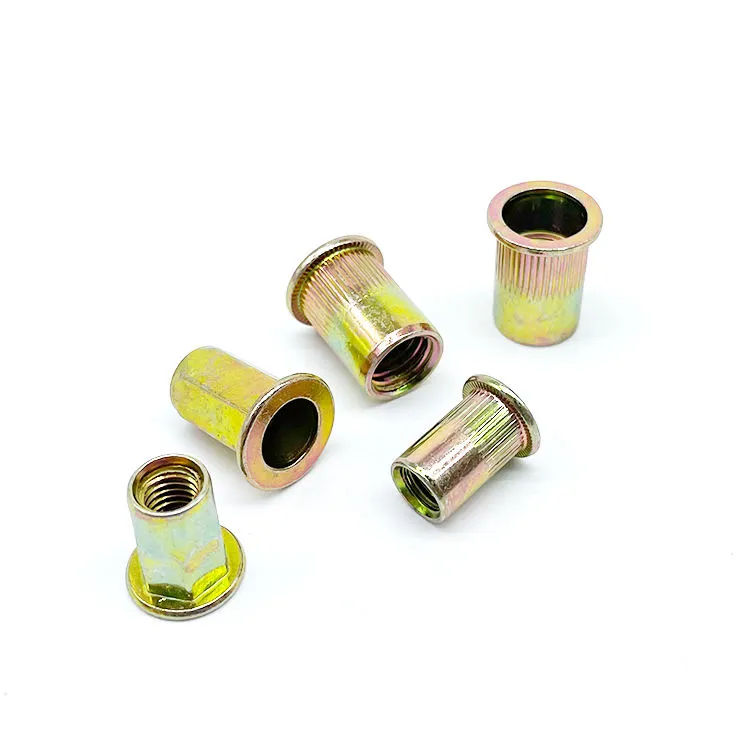

m12 flange nut
Oct . 09, 2024 05:21 Back to list
m12 flange nut
Understanding the M12 Flange Nut A Comprehensive Overview
In the world of fastening systems, the M12 flange nut plays a significant role due to its unique design and practical applications. This nut is designed to provide enhanced stability and load distribution in various mechanical assemblies. In this article, we will explore the features, applications, benefits, and installation guidelines for the M12 flange nut.
What is an M12 Flange Nut?
An M12 flange nut is a type of nut that has a wide, integrated flange at one end. The “M12” designation indicates that the nut is designed to fit a bolt with a nominal diameter of 12 mm. The flange, which is formed as an integral part of the nut, serves multiple purposes. First and foremost, it helps to distribute the load over a larger surface area. This reduces the likelihood of damage to the materials being fastened and enhances the overall stability of the joint.
Key Features
1. Material Composition M12 flange nuts are commonly made from materials like carbon steel, stainless steel, and alloy steel. The choice of material greatly influences their corrosion resistance, strength, and suitability for different environments.
2. Flange Design The flange is typically serrated or smooth, with the serrated design providing better grip and preventing loosening due to vibration. This is particularly beneficial in high-vibration environments such as automotive and industrial applications.
3. Thread Pitch The M12 nut usually comes with a standard thread pitch of 1.75 mm, which is commonly found in metric fastening applications. This standardization simplifies sourcing and compatibility with other components.
Applications
M12 flange nuts are versatile and can be found in various applications across different industries
- Automotive Industry Used in vehicle assembly for securing components such as suspension parts, engine mounts, and exhaust systems where strength and vibration resistance are crucial. - Construction Ideal for fastening structural components in buildings and bridges, where they provide enhanced stability and durability. - Manufacturing Utilized in machinery and equipment assemblies, where they play a critical role in maintaining integrity under heavy loads. - Electronics In some cases, these nuts are used in the assembly of electronic enclosures, where a secure yet non-damaging fastening solution is essential.
Benefits of Using M12 Flange Nuts
m12 flange nut

1. Load Distribution The flange distributes the load over a wider area, reducing stress concentrations that can lead to material failure.
2. Vibration Resistance Flanged nuts, especially serrated ones, provide better retention and are less likely to loosen from vibrations, which enhances the reliability of the joint.
3. Reduced Damage The large bearing surface of the flange minimizes the risk of damaging the workpieces, such as soft materials or thin sheets, which is critical in many applications.
4. Ease of Installation The design of flange nuts allows for easy handling and installation, often requiring less torque compared to standard nuts due to the nature of the flange.
Installation Guidelines
Proper installation of M12 flange nuts is essential for ensuring their effectiveness
1. Surface Preparation Ensure that the surfaces being joined are clean and free from debris, oil, or other contaminants that could compromise the fastening.
2. Torque Specifications Follow the manufacturer’s guidelines regarding torque specifications. Using the appropriate amount of torque ensures a secure fit without damaging the materials.
3. Sequence of Installation If multiple nuts are being installed, it’s advisable to follow a specific sequence (like a star pattern) to evenly distribute the load and prevent warping of components.
4. Periodic Inspection For critical applications, regular inspection of fastened joints is recommended to check for signs of wear, looseness, or corrosion, especially in high-vibration environments.
Conclusion
The M12 flange nut is a vital component in many mechanical systems thanks to its unique design, which provides superior load distribution, vibration resistance, and ease of installation. Understanding its features and applications can help engineers, manufacturers, and DIY enthusiasts make informed decisions when selecting fasteners for their projects. Whether in automotive, construction, or manufacturing, the M12 flange nut continues to be a reliable choice for securing crucial components.
Latest news
-
High-Strength Hot Dip Galvanized Bolts - Hebei Longze | Corrosion Resistance, Customization
NewsJul.30,2025
-
Hot Dip Galvanized Bolts-Hebei Longze|Corrosion Resistance&High Strength
NewsJul.30,2025
-
High-Strength Hot-Dip Galvanized Bolts-Hebei Longze|Corrosion Resistance&High Strength
NewsJul.30,2025
-
Hot Dip Galvanized Bolts-Hebei Longze|Corrosion Resistance&High Strength
NewsJul.30,2025
-
Hot Dip Galvanized Bolts - Hebei Longze | Corrosion Resistance, High Strength
NewsJul.30,2025
-
High-Strength Hot Dip Galvanized Bolts-Hebei Longze|Corrosion Resistance, Grade 8.8
NewsJul.30,2025

